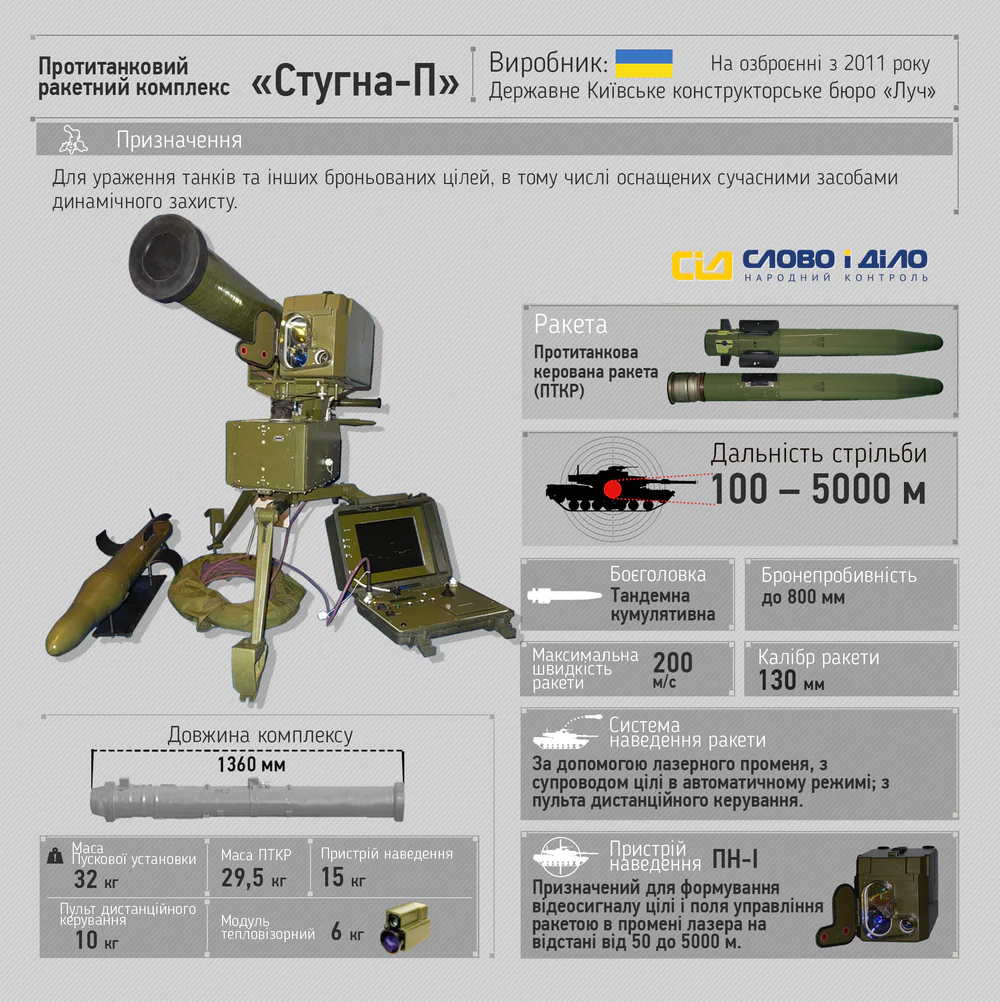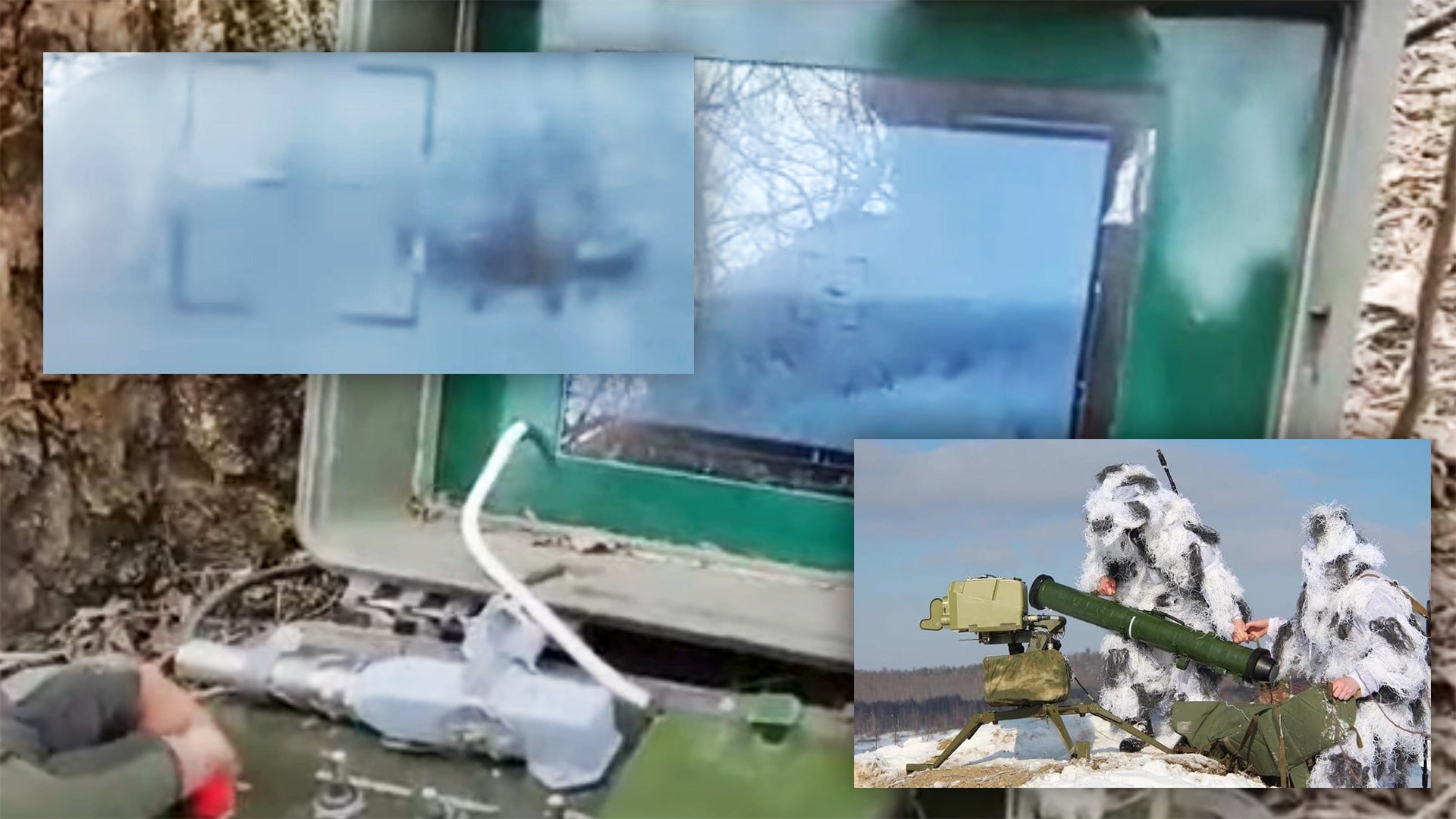The importance of ground-based weapons to Ukraine’s air defense is undeniable, but yesterday a video emerged showing Ukrainian armed forces downing a Russian attack helicopter with an unlikely weapon — an anti-tank guided missile, or ATGM. Yet the seemingly unconventional use of the ATGM is nothing new in the context of modern warfare.
Originally posted on Twitter by vocal military commentator and serviceman Yuriy Kochevenko on April 5, the footage shows a distant Russian Aerospace Forces, or VKS, Ka-52 helicopter gunship hovering above Ukrainian woodland for a few seconds before its destruction by a Stugna-P ATGM. Readers can view the video clip below:

The video appears to be a mobile phone video of the remote-control terminal of the Stugna-P missile system, operated by personnel from Ukraine’s 95th Air Assault Brigade. In the footage, we see the Russian helicopter hovering in the distance––putting its crew in an extremely vulnerable position––as the missile operator prepares to fire.
Originally designed in Ukraine by the Kyiv-based Luch Design Bureau in the mid-2000s, the Stugna-P system consists of a launch unit that can be mounted on a tripod or integrated into a vehicle-mounted remote weapon station. The complete system features a television surveillance and aiming system, laser rangefinder, beam-riding laser guidance system, thermal imager, and missile axis control system.

Stugna-P can launch a variety of 130mm and 152mm guided missiles and has a maximum range of up to 5.5 kilometers (3.41 miles) depending on what exactly it is firing. These missiles can be guided manually or in semi-automatic command to line of sight (SACLOS) beam-riding mode, allowing for control of the missile’s trajectory via a laser beam aimed at the taget. The missiles themselves come equipped with different warheads depending on the specific type, including tandem types designed to bust through explosive reactive armor, as well as high-explosive-fragmentation and thermobaric payloads.
A typical tripod-mounted Stugna-P system has a crew of between three and four personnel, with the option to operate the launcher remotely from safer positions of up to 50 meters (164 feet) via the television surveillance and aiming system. A demonstration of one of these weapon systems by the Ukrainian military can be seen below.

In the Ka-52 shootdown footage, the operator at the Stugna-P’s controls can be seen correcting the course of the missile by readjusting the target controls to pinpoint the helicopter post-launch. As the missile’s total flight time to a target at the maximum engagement distance is known to be around 14.3 seconds, the fact that it only takes some 12 from launch to impact indicates that the Ukrainian team was approximately 5 kilometers (3.12 miles) from the helicopter.
While man-portable air defense systems (MANPADS) have received significant attention in recent weeks, the footage shows that guided weaponry of other kinds can be used effectively against low and very slow-flying helicopters under particular circumstances, especially when helicopters are executing terminal operations (landing or taking off) or are slowly moving around at low altitudes. ATGM teams can even set up ambushes where they believe the helicopters will appear or sneak close to forward bases of operation to pick them off at a distance while they are coming and going.
The Stugna-P is significantly cheaper than premium MANPADS, particularly weapons like the British-supplied Starstreak high-velocity missiles, as well as many rival ATGM models. Stugna-P unit cost is just a fraction of that of the U.S.-made Javelin for example. As a domestic ATGM model, it also has operational advantages for Ukrainian soldiers already familiar with the technology. Using lower-cost ATGMs to attack slow-flying helicopters, under certain circumstances, allows for less plentiful, and more advanced missiles to be saved for other targets that might demand their specific capabilities.
Many modern combat helicopters feature laser-warning equipment as part of their defensive suites to make their crews aware of the threat of some MANPADS and other anti-aircraft weaponry, as well as ATGMs, that use some form of laser guidance. Although the reason for the Russian helicopter’s low altitude hovering seen in the video is unclear, it would seem at least likely that it was cueing a target for one of its own missiles. Generally, helicopter operations at low levels are necessary for survival over the Ukrainian battlefield. Operating higher makes for a juicy target for MANPADS and for longer-range radar-guided SAM systems. The threat posed by ATGMs to Russian aircraft in Ukraine is especially significant in urban environments, which is increasingly where the fighting is occurring.

Yet despite the ingenuity of Ukraine’s 95th Air Assault Brigade, the use of ATGM against enemy helicopters is by no means a novel concept in the context of modern warfare. Anti-tank missiles, in general, have proved a particularly effective tool for under-resourced forces when engaging superior militaries. The conflict in Syria, in particular, has underlined ATGM’s secondary anti-helicopter capabilities. In that war, insurgent-rebel groups, such as ‘Sham Legion,’ used ATGM capabilities when targeting Syrian military helicopters.


More recently, Taliban fighters had used ATGMs to down Afghan National Defense and Security Forces helicopters fueling fears about the flow of Russian and Iranian ATGM weaponry into Afghanistan. Concerns have also been raised that growing numbers of U.S.-made anti-tank missiles have ended up in the hands of extremist-terrorist organizations, such as ISIS.
Some anti-tank weapons even have secondary surface-to-air capabilities that are anything but improvised. The Javelin, with its fire-and-forget capabilities, is capable of being used to shoot down slow and low flying aircraft by design. Russia has even tested anti-tank guided missiles in the air-to-air realm for contingency uses. The AGM-114 Hellfire anti-tank missiles fired from Apache attack helicopters have also proved reliable at taking out aerial drones and even a ground-launched version is now deployed in the anti-air role. Basically, the concept goes back deep into the Cold War and many of these systems were developed with a secondary anti-helicopter capability in mind.
Time will tell how many more Russian helicopters are destroyed by Ukrainian ATGM, but the capability certainly is there, as the video of the Ukrainian unit employing the Stugna-P proves.
Correction: The original version of this story stated that the Stugna-P system has a laser-homing guidance mode. It actually uses a laser beam-riding guidance system.
Contact the editor: Tyler@thedrive.com
